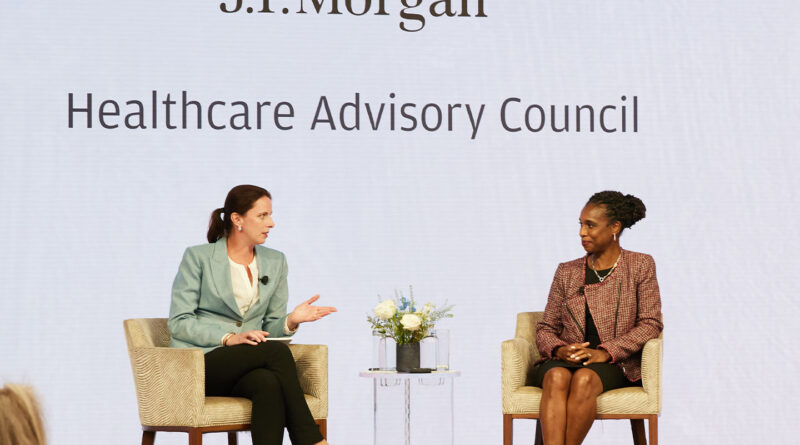2024 Health Advisory Council (HCAC)
Healthcare organizations are facing pressures from staff shortages, cyberattacks, regulatory challenges and public health crises. However, industry leaders are meeting these challenges by incorporating new technologies and strategies to better serve patients and communities.
Healthcare leaders from across the US gathered at JP Morgan’s 12th annual Healthcare Advisory Council (HCAC) event in New York, where they explored the challenges and trends facing the industry. Here are some of the key takeaways from our discussions.
AI is improving the performance of doctors and entering new use cases
Healthcare has long used artificial intelligence to analyze large amounts of data, such as identifying drug-drug interactions. Recent developments in AI have increased efficiency in new areas, such as:
- Ambient Documents: Charting and thousands of medical records consumes too much time and attention of doctors. Some electronic medical record (EMR) systems use AI to record patient encounters and transcribe notes and notes.
- Message format: As patient care continues online, AI helps doctors by making responses through EMR communication systems, reducing mental burden.
The panelists encouraged leaders to think about implementing AI in their strategy by first defining specific use cases, and then implementing the right solution for each, rather than trying a method. equal to one another.
“With emerging AI, it’s important to have someone in the loop,” said Peter Durlach, CVP, Chief Strategy Officer at Microsoft Health & Life Sciences. “Having human oversight helps improve the accuracy and quality of AI products, which is important in an industry like healthcare.”
Before implementing AI, healthcare systems and potential users should consider balancing short-term and long-term needs, and the risk and governance involved in each case. application.
Thinking about cybersecurity in terms of technological resilience
Healthcare systems store large amounts of confidential confidential information, making them prime targets for cyber attacks. The February 2024 data breach at Change Healthcare provides an example of this risk.
“Actually, it’s not if A cyberattack will occur against a healthcare organization, of course when a cyberattack will happen,” said Max Alexander, Vice President of Cyber and Technology Emerging Threats Research at JPMorganChase.
Although prevention is important, patience should be the most important thing. Organizations must ensure that they can recover from cyberattacks by focusing on technology resilience, having a business continuity plan and deploying it regularly.
While AI technologies are improving various aspects of healthcare, they are also changing the cyberattack threat landscape. Some examples include:
- Phishing emails are written more persuasively than ever before as adversaries can run them through large language tools (LLM) such as ChatGPT to improve spelling, grammar and appearance.
- Deepfake technology produces large images, videos and audio that are not real, including simulations of real people using their looks and voices.
Health leaders stressed that mass theft can be prevented through multi-factor authentication.
Some areas of health care are ripe for disruption—or evolution
From online pharmacies to home care, industry leaders discussed areas for improvement by addressing health issues and designing systems around patients’ needs and goals. .
“The retail pharmacy experience is completely broken. It’s not patient-centered,” said Alicia Boler Davis, CEO of Alto Pharmacy. “The pharmaceutical industry is ripe for disruption.”
#Health #Advisory #Council #HCAC
